Col d'Aussois (2,914 m)
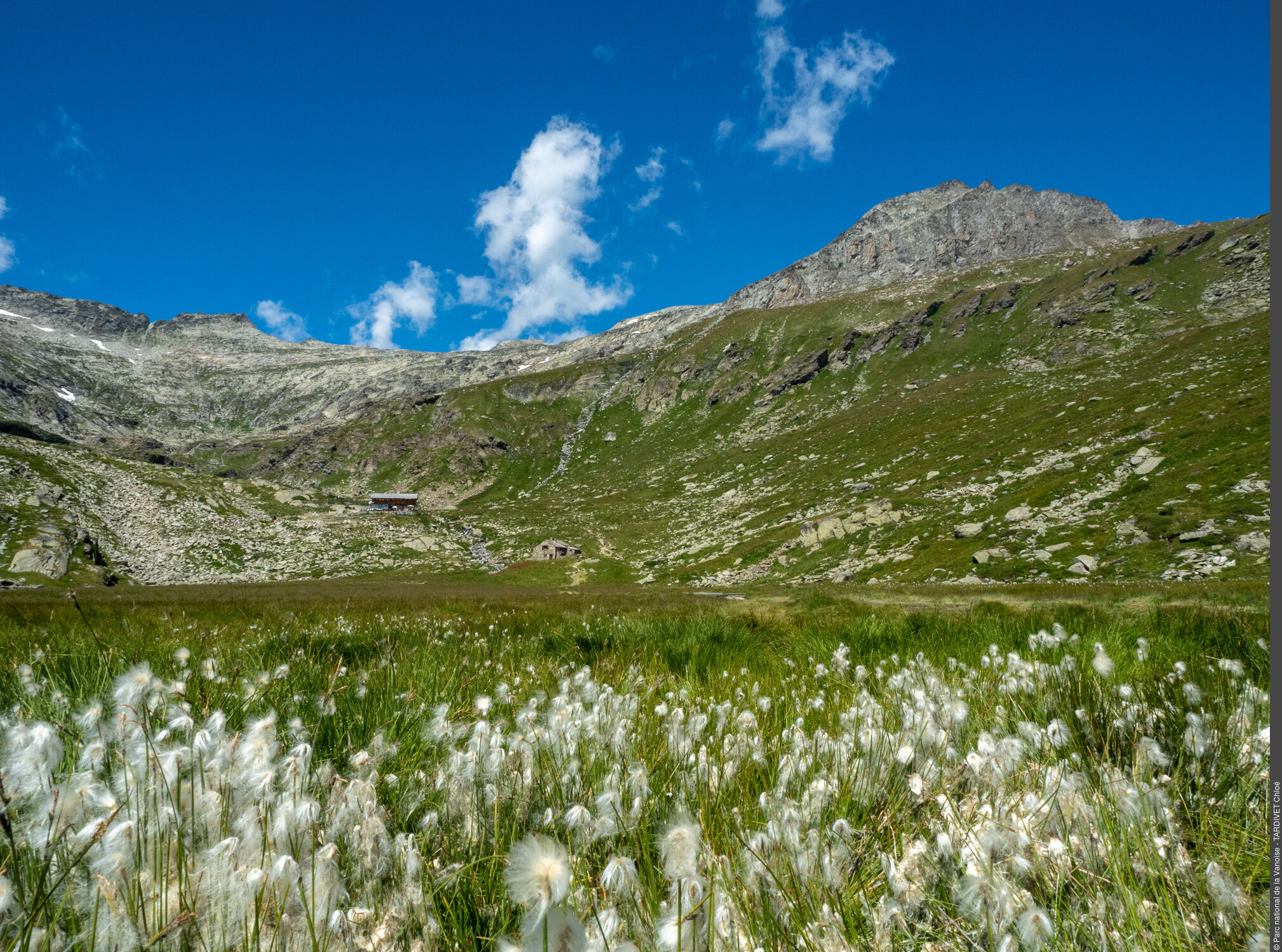
AUSSOIS
Col d'Aussois (2,914 m)
Difficult
7h
15,1km
+927m
-925m
Return
Embed this item to access it offline
The welcoming atmosphere of the alpine pastures of the Fond d´Aussois gradually fades away. The altitude can now be felt, the slope of the riprapped path continues to harden. The alpine choughs seem to show off around the hiker who is much more susceptible to gravity than the chough. When at last the view opens up further afield, the mineral expanse is illuminated by coloured patches of silène acaule. The skyline finally opens and the roof of the Alps sparkles in the deep blue skies of these much-loved days.
Description
Go down towards the Plan d´Amont dam and pass under the dam on the left. Take the track overlooking the body of water and follow it along its length to a bridge spanning the Saint-Benoit torrent: this is the Pont de la Sétéria, joining the GR5. Cross the Pont de la Sétéria and continue along the trail, referring to the sign. After a few hairpin bends, take the trail on the left leading to the Refuge de Fond d´Aussois. To access a plateau, you must cross an initial footbridge. Pass a nearby chapel, several chalets, cross again over two footbridges to reach the surroundings of the Refuge de Fond d´Aussois. The Col d´Aussois route is indicated. Follow the trail to a plateau where you cross a footbridge. After two steep drops, discrete yellow marks demarcate the route over the rocky terrain. On the sloping ledge before the pass, do not join the large white cross but follow the route towards the pass marked by a sign. To return follow the uphill route. The high mountain is a fragile environment, respect the trail and follow the markings.
- Departure : Dam site, village of Aussois
- Arrival : Col d'Aussois (2,914 m)
- Towns crossed : AUSSOIS
Forecast
Altimetric profile
Recommandations
High mountain route. Early in the season, some névés can be dangerous. Make sure you have the appropriate equipment and footwear. Stay on the trails. One drinking water supply is available at the Refuge de la Vanoise.
Is in the midst of the park
The national park is an unrestricted natural area but subjected to regulations which must be known by all visitors.
Information desks
Maison Cantonale, 9 Place Sommeiller, 73500 Modane
Transport
"Rail connection to Modane. Information: www.voyages-sncf.com
Then transport by coach to the administrative centre of Aussois. Information: www.transavoie.com
No public transport between Aussois and the dam site.
Suggested hitchhiking organised in the Haute-Maurienne valley. Information: www.rezopouce.fr</a"
Then transport by coach to the administrative centre of Aussois. Information: www.transavoie.com
No public transport between Aussois and the dam site.
Suggested hitchhiking organised in the Haute-Maurienne valley. Information: www.rezopouce.fr</a"
Access and parking
In Modane, take the D 215 towards Aussois. Once you’ve arrived in Aussois, go to the top of the village and take the small road that rises towards the dams. Leave a panoramic viewpoint on the left and take a steep road on the right for 100 m to reach the car park.
Parking :
Car park provided by the municipality for the entire dam site, departure point for all hikes.
10 points of interest
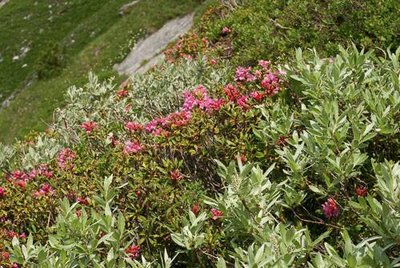
Lande à rhododendron ferrugineux et saule glauque, surplombant le hameau de Chollière. Commune de Pralognan la Vanoise. - PNV - GOTTI Christophe  Flora
FloraRhodora
This shrub adorns the mountain with the most beautiful colours from mid-June until the end of July. In Greek, Rhododendron means “red tree” and its ferruginous qualities come from the rusty colour of the underside of its leaves. The rhododendron finds it is perfectly at home on the slopes where the snow persists and thereby offers it protection against the frost.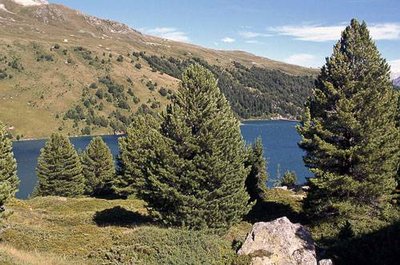
Pins cembro autour du lac du barrage hydro-électrique de Plan d'Amont. - PNV - MOUSSIEGT Karine  Flora
FloraThe cembra pine
The pinus cembra is comprised of the cembro or arolla pine. The hardwood is used in cabinet-making. Its long needles, in ascicles of five, make it easily recognisable. Mountaineers consume the cones or seeds, competing with the spotted nutcracker. The cembro pine climbs up to 2,300 m and is fond of acid soil and varied orientations. Together with the rhododendron, bilberries and cranberries, it constitutes the forest boundary.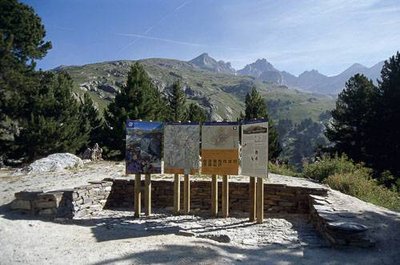
Le point d'information sur site (PIS) de Plan d'Amont. Vue vers nord-est. - PNV - BRÉGEON Sébastien  History
HistoryVanoise National Park
“Here there is space. Here there is pure air. Here there is silence. The kingdom of flawless dawns and naive beasts...”. It was with these words that Samivel wrote the commandments of the National Park upon its creation in 1963. Ÿou enter a protected area, “the great garden of the French” which it is your responsibility to protect. The regulations are displayed on the various panels intended for hikers.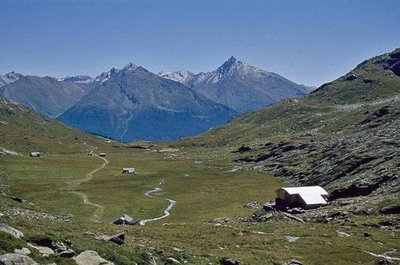
Le Fond d'Aussois et le refuge CAF du Fond d'Aussois. - PNV - BRÉGEON Sébastien  Geology
GeologyFond D’Aussois Basin
A glacial basin is the name give to the area dug out by a glacial valley. Once the glacier recedes, this depression is generally occupied by a lake of variable size which gradually fills up with fluvio-lacustrine alluvium until it forms a plateau. Here, certain areas retain their swamp-like properties with typical plants such as swertia perennis. These rich and flat grasslands have long been appreciated for livestock farming as evidenced by the presence of old alpine huts.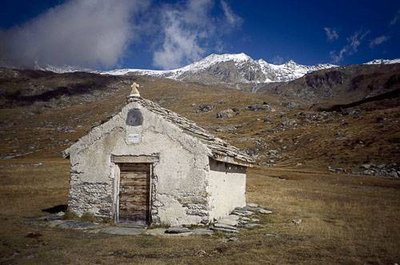
Chapelle Notre-Dame des Anges. - PNV - GOTTI Christophe  Architecture
ArchitectureChapel of Notre-dame-des-Anges
During the summer, it was difficult to get down to the village for church services. This chapel was therefore built in 1886 by Louis Couvert. The lauze roofing and architecture of the building show us how local materials were once used, with the sparing use of wood which was complicated to transport at that time. In order to avoid mountain hazards such as rock falls and avalanches, the religious buildings such as oratories or crosses figure prominently on the mountain.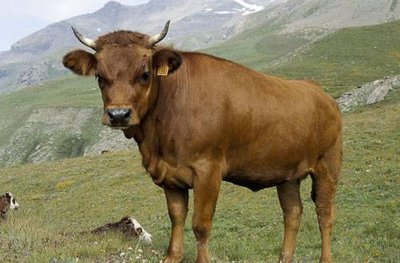
Vache de race Tarentaise à l'alpage. Vallonbrun, Lanslevillard. - PNV - FILLIOL Michel  Pastoralism
PastoralismTarentaise heifers
The Tarentaise cow is known for its fawn-brown coat and dark pigmentation around the eyes. It owes its name to the Tarentaise valley, which you can see from beyond the Col d’Aussois. It is rather thickset at a weight of 500 to 600 kg. It is the favoured breed of the Savoy mountain breeders thanks to its stamina as well as the quality of its milk which is used in the manufacture of Beaufort. The animals that you can see at Fond d’Aussois are heifers, or rather, young cows that have not yet calved and therefore don’t produce milk.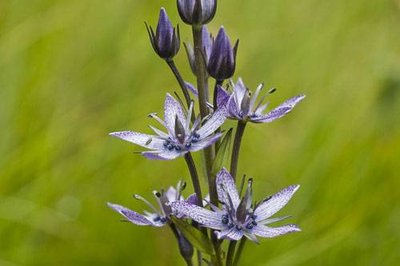
Swertie vivace. - PNV - HERRMANN Mylène  Flora
FloraSwertia perennis
This plant (Swertia perennis) favours cold, swampy conditions where the water circulates slowly, beholden to the Sub-alpine and Alpine regions. It belongs to the family which includes gentians. It blooms in mid-summer and adorns the marshes with its violet corolla. The swertia plant is protected at national level. The gathering of any plants is prohibited in the heart of the Vanoise National Park.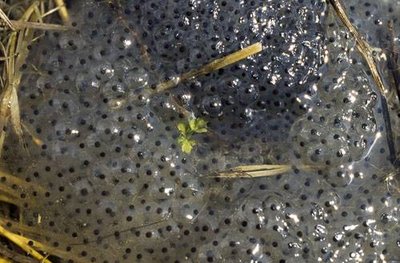
Ponte de grenouille rousse. - PNV - BOURGEOIS Marie-Geneviève  Fauna
FaunaThe tadpoles
The wetlands of the plateau are favoured by the common frog for reproduction. The stresses of the cold and frost existing at this altitude slow down the development of eggs and tadpoles. It takes two summers for an egg to become a frog while one season is enough in the lowlands. The eggs and tadpoles provide substantial food for the brown trout that also live in the Saint-Benoit rivulet. Ÿou can see the egg-laying frogs in June in large gelatinous clusters. The common frog is the only amphibian that can reproduce in the Fond d’Aussois.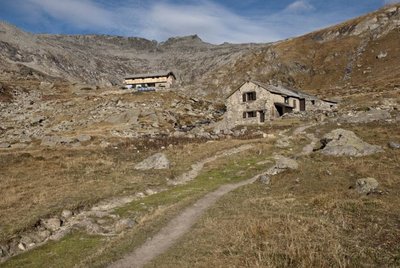
Vue sur le refuge du Fond d'Aussois (2009) - PNV - Pierre LACOSSE  Viewpoint
ViewpointView over the Refuge du Fond d'Aussois
Opened in 2004, the new Refuge du Fond d´Aussois features a contemporary wood and steel architecture, with a semi-cylindrical roof, to integrate into the landscape and brave the elements. It engages with the former Club Alpin Français chalet, an alpine building once redesigned to provide overnight shelter and meals for the mountain people.
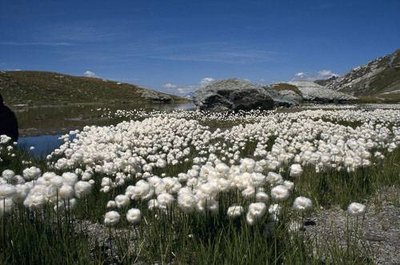
Station florale de linaigrettes de Scheuchzer. - PNV - JORDANA Régis  Flora
FloraEriophorum scheuchzeri
The Eriophorum scheuchzeri (Eriophorum scheuchzeri) is an herbaceous perennial plant from the Cyperaceae family. It grows in the mountain wetlands. When the flowers are in bloom it forms a cottony carpet that undulates in the breeze. Three species of Scheuchzer´s cottongrass grow in Aussois. Some people insist that its white plumes were once used to fill cushions and mattresses.
